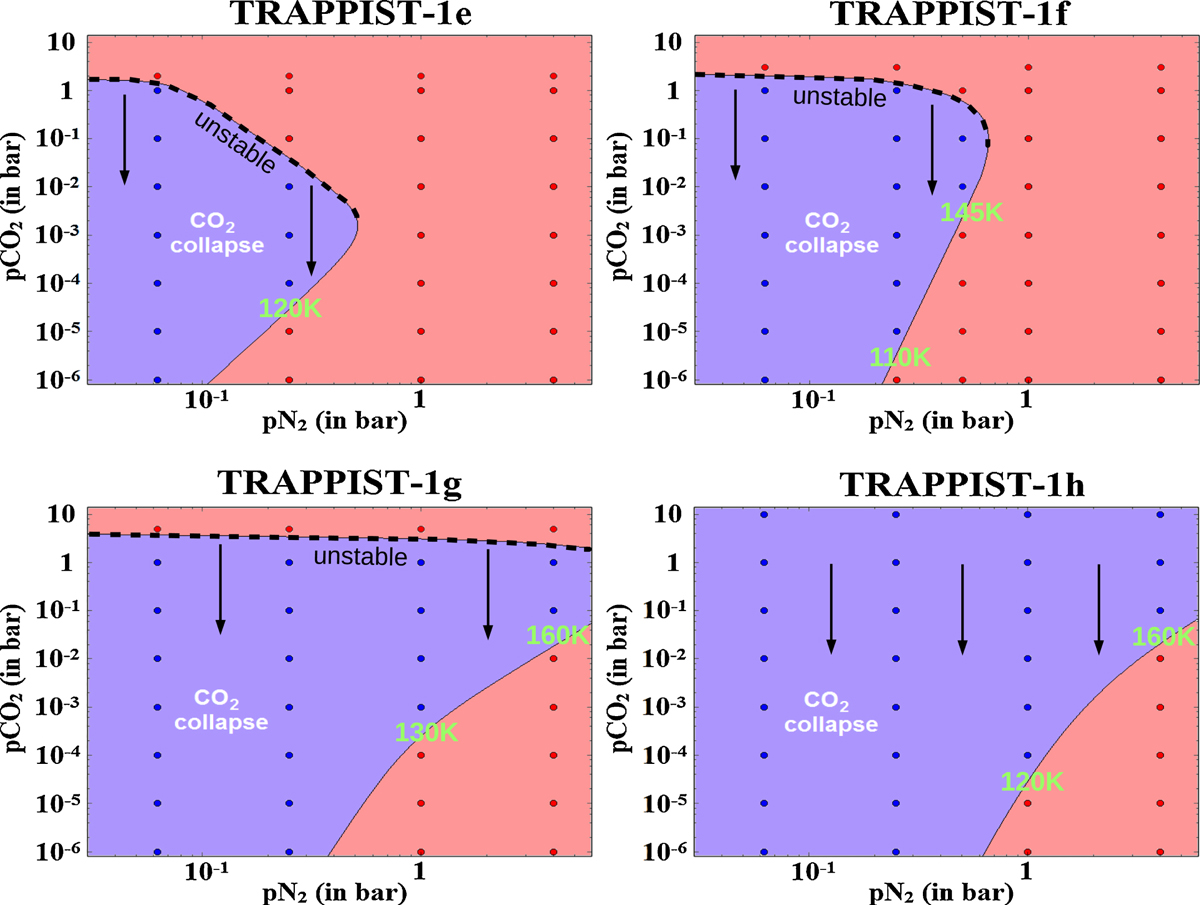Fig. 7

Climate regimes reached as a function of the partial pressures of N2 and CO2. For each set of (pN2, pCO2 ), it is indicated if the atmosphere is stable (red) or not (blue) to the atmospheric condensation/collapse of CO2. The black arrows indicate how planets that have an unstable atmosphere would evolve on this diagram. Temperatures (in green) correspond to the rough estimate of the temperature of the cold point, at the stable lower boundary (blue is up; red is down). Simulations were performed assuming a surface albedo of 0.2 (corresponding both to a water ice surface around TRAPPIST-1, or a rocky surface). Water vapor is not included in these simulations. On TRAPPIST-1e, the inclusion of water vapor might substantially increase the temperature of the cold points through transport of latent heat from substellar to anti-substellar regions, and through the greenhouse effect of water vapor. On colder planets, the effect should be marginal.
Current usage metrics show cumulative count of Article Views (full-text article views including HTML views, PDF and ePub downloads, according to the available data) and Abstracts Views on Vision4Press platform.
Data correspond to usage on the plateform after 2015. The current usage metrics is available 48-96 hours after online publication and is updated daily on week days.
Initial download of the metrics may take a while.


